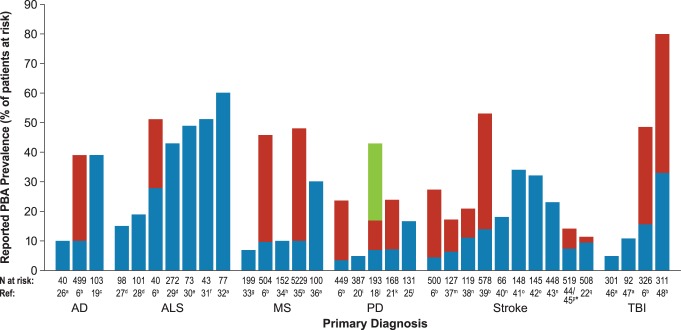Figure 1. Published PBA symptom prevalence estimates by primary neurological condition.
Shading indicates multiple estimates. AD, Alzheimer’s disease; ALS, amyotrophic lateral sclerosis; CNS-LS, Center for Neurologic Study–Lability Scale; MS, multiple sclerosis; PBA, pseudobulbar affect; PD, Parkinson’s disease; PRISM, PBA Registry Series; TBI, traumatic brain injury. aPatient interview; bCNS-LS ≥13 (higher estimate), CNS-LS ≥21, lower estimate; c Poeck criteria: pathological affect could be mood congruent (emotional lability) or incongruent (pathological laughing and crying); dRetrospective review of hospital or clinic records; eMailed questionnaire; fEmotional lability questionnaire (ELQ); gAscertainment method unknown; hPatient interview, Poeck criteria; iBrief questionnaire (uncontrollable laughing/crying when not happy/sad); jCNS-LS ≥13 (highest estimate), CNS-LS ≥17 (middle estimate), Cummings Involuntary Emotional Expression Disorder criteria (lowest estimate); kCNS-LS ≥17 (lower estimate), CNS-LS ≥13 (higher estimate); lPathological Laughing and Crying Scale (PLACS) ≥10 and score of ≥2 on PLACS items 2 (frequency), 13 (loss of voluntary control), and 18 (distress/embarrassment); mPatient interview House (lower estimate), and Kim (higher estimate) criteria; nPatient interview House criteria; oPatient interview Kim criteria; pPatient interview Kim criteria (lower estimate; n = 516) and modified Kim criteria (patient report only without corroboration from relatives; higher estimate); qPatient interview Kim criteria at hospital admission (lower estimate) and at 3 months (higher estimate) following stroke.

